Gastronomers delight in dining out in Manila in the Philippines because the city offers a smorgasbord of international cuisines, street food, and weekend market that offer meals that are influenced by Spanish, Chinese and Malay cuisines. Here are some popular Filipino foods that you should look out for when you visit Manila.
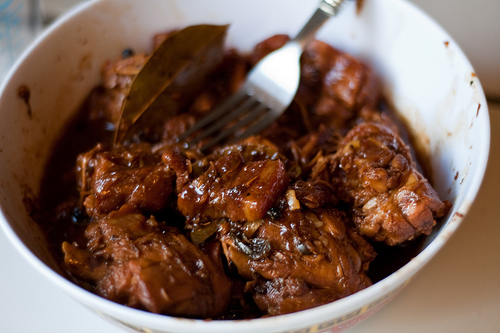
Pork adobo is the national dish of the Philippines. Adobo is very simple to make, but every version seems different. There are three essentials ingredients to pork adobo: garlic, vinegar and soy sauce. Pork adobo has a sweet, carmelized flavor, although every version differs with whomever is cooking it.
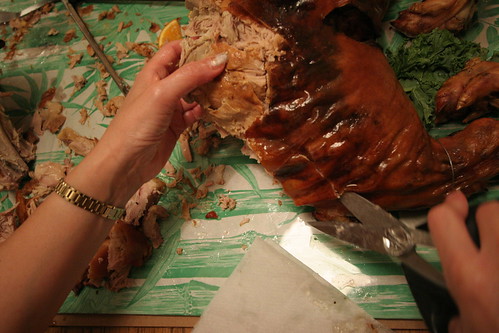
The Filipinos are avid pork eaters and they’ve mastered the art of roasting pig. Filipino lechon is one dish that you’ll see almost everywhere in the Philippines. You’ll find streets stands roasting a whole pig on a spit. Crispy suckling pig can be quite delicious!
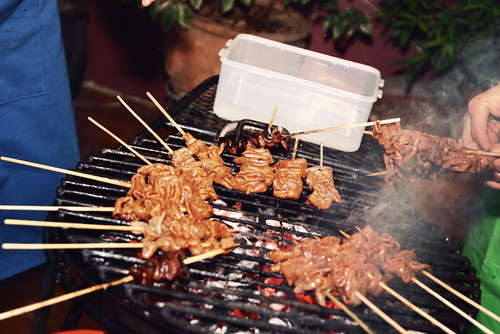
Barbecued isaw is also a local favorite. Otherwise known as chicken intestines or pork intestines, is also a local favorite. The intestines are washed, turned inside out and washed again. The cleaning process is repeated several times. Isaw is then grilled or grilled on sticks and then dipped in kurat. (A Filipino term for vinegar with onions, peppers, and other spices).
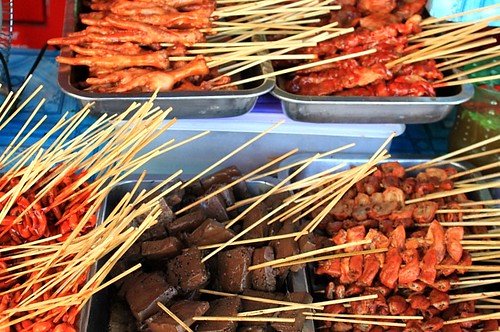
If you’re squeamish about blood, this next dish probably isn’t for you. Betamax consists of cubes of barbecued pig’s blood.
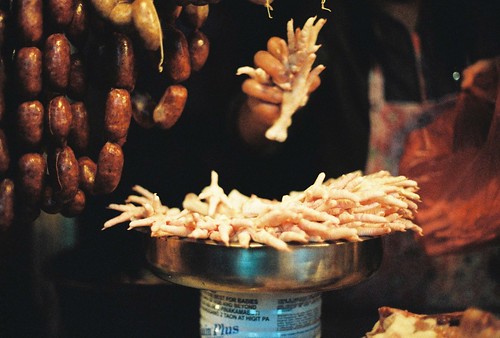
Adidas is a dish that consists of chicken feet or chicken heads. The feet or heads are marinated in a mixture of calamansi, spices and brown sugar. Then they’re grilled.
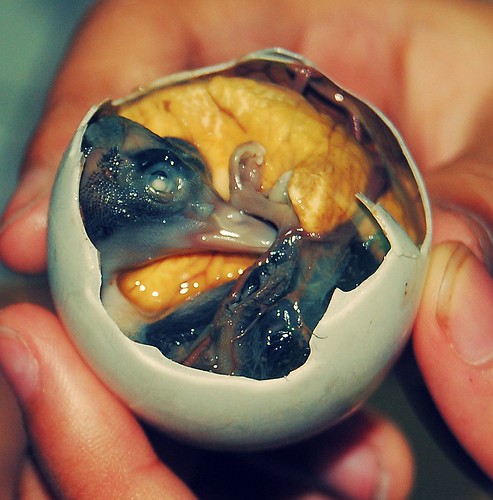
Balut also isn’t for the faint of heart. It consists of a 17-day-old fertilized and boiled duck embryo. Balut is often listed as one of the most unusual foods in the world. It might not look very appetizing, but it isn’t a local delicacy for nothing. This 17-day-old duck embryo is boiled, served with rock salt or spicy vinegar and is often consumed with beer.
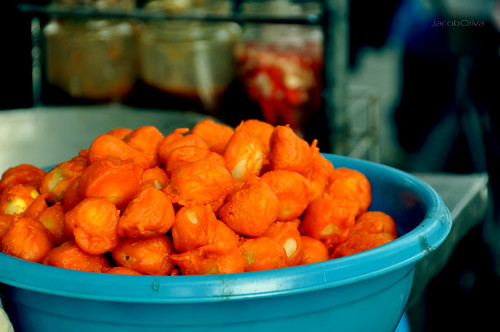
Kwek-kwek is also a local favorite. It consists of boiled chicken or quail eggs that are deep-fried in an orange batter.

Tapa is a type of beef jerky that is commonly eaten for breakfast.
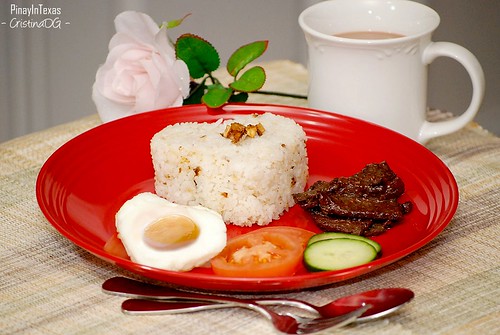
Don’t miss out on the chance to try a classic Filipino breakfast. Tapsilog consists of beef jerky, fried garlic rice, and a fried egg.
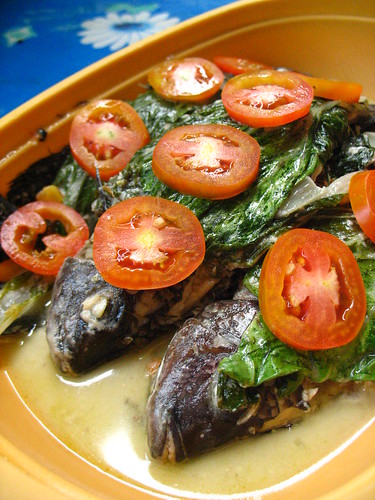
Sinanglay is a staple Filipino food. Fresh tilapia is stuffed with tomatoes and onions, then simmered in coconut milk and wrapped in pechay leaves (similar to bokchoy). The pechay leaves help to keep the fish together and lends a peppery taste to the dish.
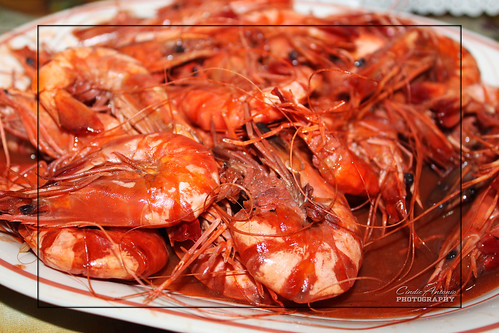
Seafood lovers will almost certainly enjoy and order or two of Nilasing na hipon (shrimp marinated in alcohol) and ulo ng pusit (crispy squid head) are two dishes that are a must-try for fish lovers.
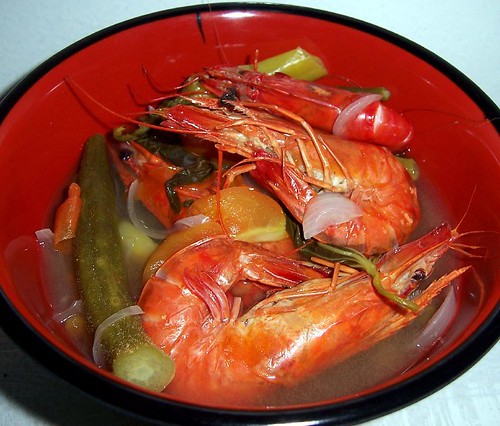
Shrimp sinigang delivers a tasty explosion of the tastebuds. Fresh shrimp are marinated in a taramind broth that bursts with flavor.
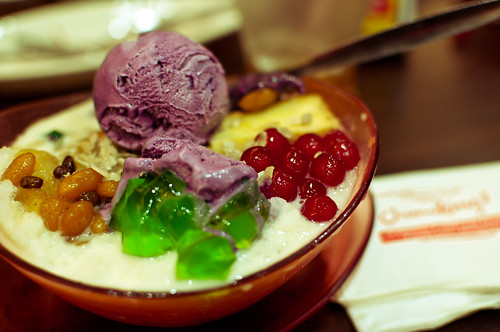
Manila is a hot, humid city. There’s no better way to beat the heat than with a big bowl of halo-halo. Consisting of shaved ice, boiled sweet beans and fruit toppings, halo-halo is a popular dish that is well loved by most Filipinos.
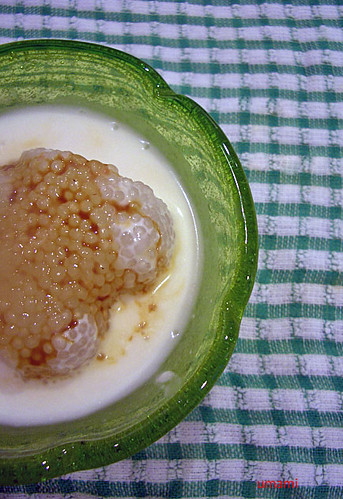
Sago Gula Melaka is a sugary concoction of sago pearls, palm sugar syrup and santan. And, don’t forget to wash it all down with an ice cold San Miguel beer.

Canadian expat Carrie Kellenberger has kept a home base with her husband in Asia since 2003. A prolific traveler, Carrie has funded her travels primarily as a writer, editor, travel blogger and photographer, but she has also worked as an educator, voice over artist, model and nightclub singer. She draws upon her 15+ years of travel experience to write about travel-related issues and the countries she has visited on her award-winning web site, My Several Worlds.
Her photography and travel articles have appeared in both print and online publications around the world, including Travel and Leisure Asia, Unearthing Asia and Hip Compass Escapes.








